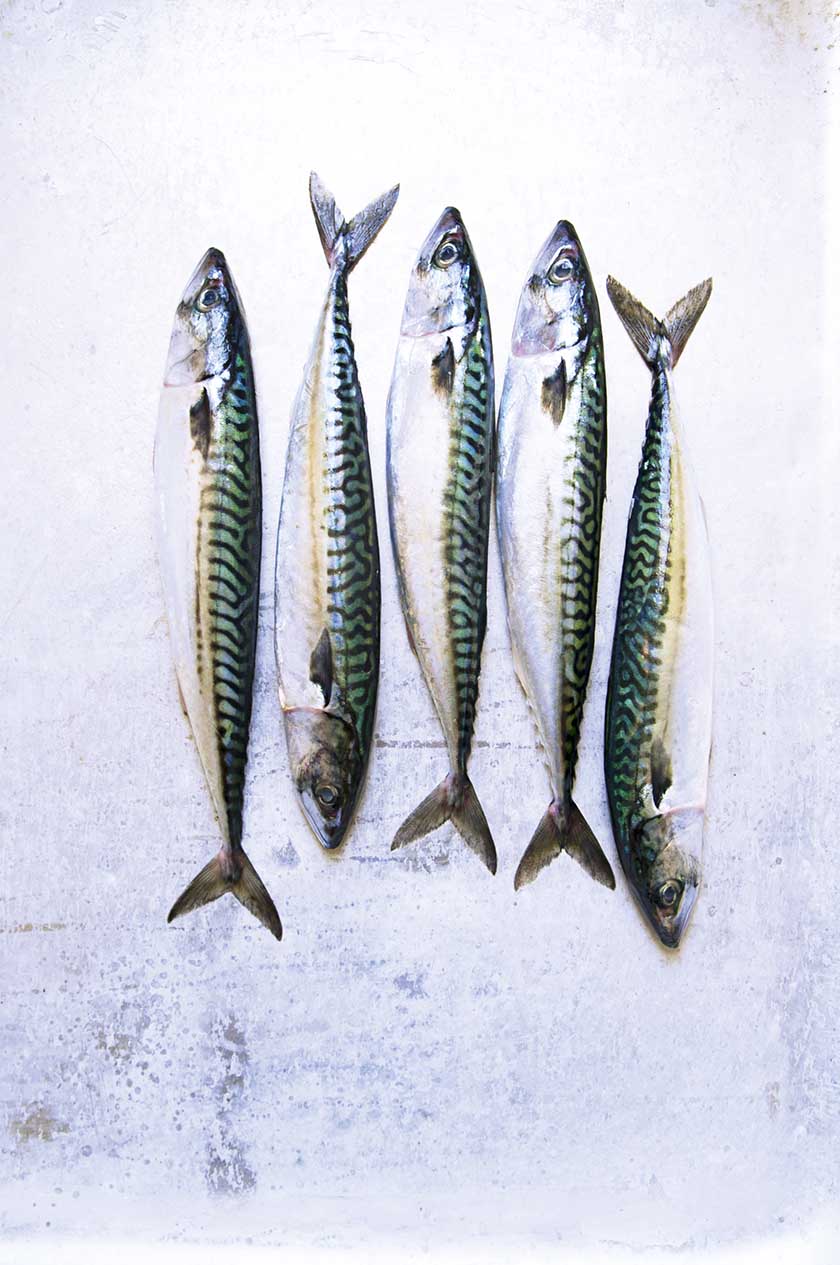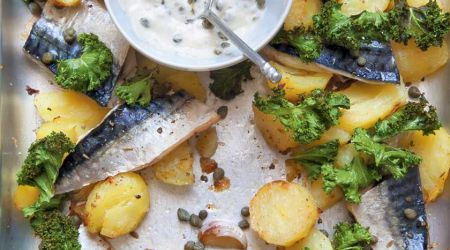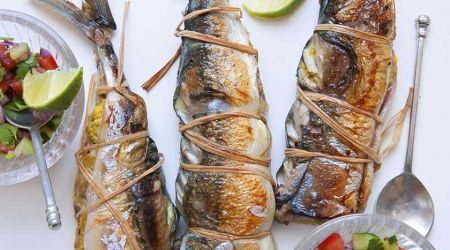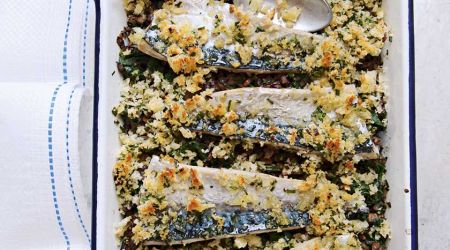Mackerel
After years under threat, these eye-catching and versatile fish are firmly back on the menu, says Clarissa Hyman
Readers of a sensitive disposition should move straight over the next paragraph or they might never eat mackerel again, which would be a great loss. For the diner, if not the fish.
The reason these splendid silvery fish were once called the ‘scavengers of the seas’ was because they were said to have fed on drowned sailors. This theory, I am glad to report, is now thoroughly debunked but as the writer Alice Thomas Ellis once pronounced: ‘It is never a good idea to speculate too thoroughly on the eating habits of what you’re eating.’
It is a truism that all fish should be fresh but some have to be fresher than others. Or, rather, they spoil more quickly. In the 17th century there was a special law allowing fishmongers in Billingsgate to sell mackerel on Sundays, when all other trade was forbidden because their high oil content means they need to be eaten as soon as possible after landing. Straight from the sea into your pan or on the beach barbecue is the ideal; and they taste better if you catch them yourself, so I am told.
Scomber scombrus, their Latin name, makes them sound like a character from Game of Thrones, and they do have a similarly mysterious beauty about them. They catch the eye with their iridescent silver, aquamarine and black colouring and a sleek, streamlined bullet shape that enables them to zoom through the water like guided missiles. On their backs, the dark, curved markings bear a resemblance to Maori warrior tattoos.
They are pelagic fish that swim in large shoals in a range that extends from the Black Sea and Mediterranean to the north of Norway and Iceland, and from Labrador down to Cape Hatteras. They hunt small fish near the surface in shallow water during the summer (hence the saying ‘set a sprat to catch a mackerel’) and when winter approaches, they leave for deep water to almost hibernate.
Related species include king mackerel, found in subtropical seas from North Carolina to Brazil and the Arabian Gulf to Japan. Chub mackerel is a smaller species with more delicate markings and bigger eyes – hence the Sicilian name occhi grossi – fished from the Indian Ocean to the Pacific. The third main sibling in the extensive family is Spanish mackerel, caught in waters from Cape Cod to Mexico and across the Pacific.
There were once vast quantities of mackerel off the coast of Cornwall before over-fishing almost wiped them out in the 1970s. Hundreds of tonnes of indiscriminately trawled fish were dumped straight into the holds of Eastern bloc factory ships. It was like the Klondike gold rush and although the rewards were rich in the short term, in the long run it almost decimated the traditional regional fishery.
However, careful stock management and tighter regulations in the past two decades have reversed the decline. Industrial fishing for the species is now banned in Cornish waters and the fish are caught from small boats using handlines, a selective and low-impact method that also enforces a minimum landing size.
The season starts in late autumn, a time when the Japanese believe they are at their best, just as they’re fattening up for winter. When sparklingly fresh from the sea, still stiff with rigor mortis, mackerel are a most excellent fish, neither too fatty or too bland. The aroma should be light and reminiscent of fine green seaweed: if even a little past their prime they can impregnate the kitchen with a certain aroma that will never rival Chanel No.5.
At their best, the fish are delicate but firm and rich with a slight mineral tang, so a little goes a long way. The bones are easy to separate from the flesh, and they are also one of the healthiest fish to eat, highly nutritious in vitamins and minerals, in particular omega-3 fatty acids.
Both filleted and whole, mackerel are pretty easy to cook, needing little more than a squeeze of lemon. The oily flesh is balanced by generous amounts of natural juice but it is probably best to avoid too much cream or butter. They do, however, pair exceedingly well with a classic astringent sauce such as gooseberry, rhubarb or cranberry. The acidity of tomatoes and the sharpness of mustard also suit the fish. They are remarkably versatile and can be used in a wide range of dishes from curries to stir-fries. They smoke well and make excellent pâté or can be filleted and soused like herrings or pickled in white wine.
We should celebrate the humble mackerel. If nothing else, they have brought us an excellent pre-watershed expletive. ‘Holy mackerel, Batman!’ as the boy wonder would say to his caped crusader in times of crisis. ‘Holy salmon!’ just doesn’t have the same POW!
Vital Statistics
Season: August to February (avoid March to July as they are spawning)
Farmed: no
Minimum size: 30cm
Omega-3 count: high
Fishing method: handlines
Catch range: all round the UK coast, the Atlantic coast of America and South America and Australia, Japan and the Mediterranean

Recipes
Get Premium access to all the latest content online
Subscribe and view full print editions online... Subscribe




